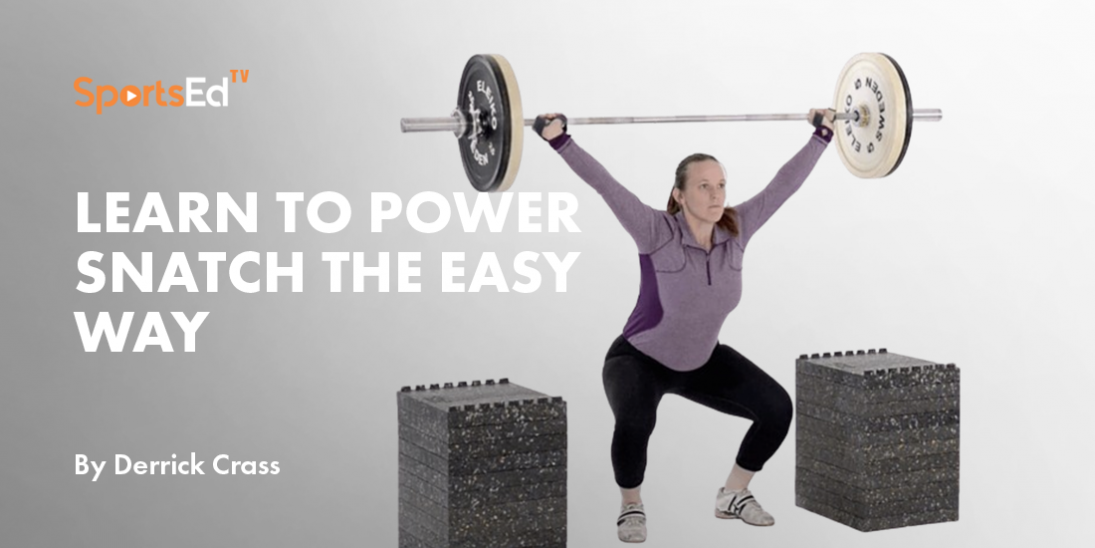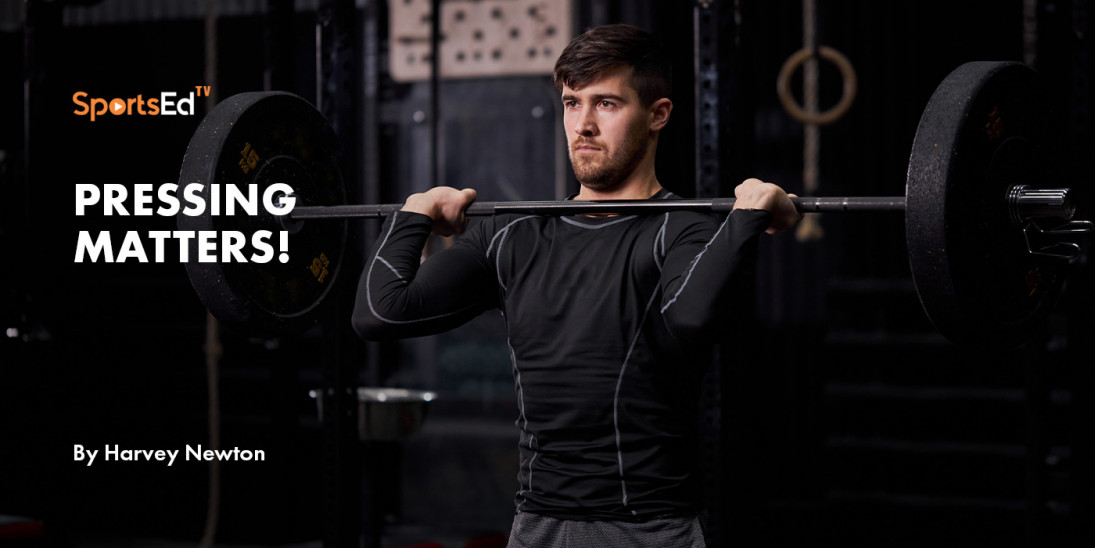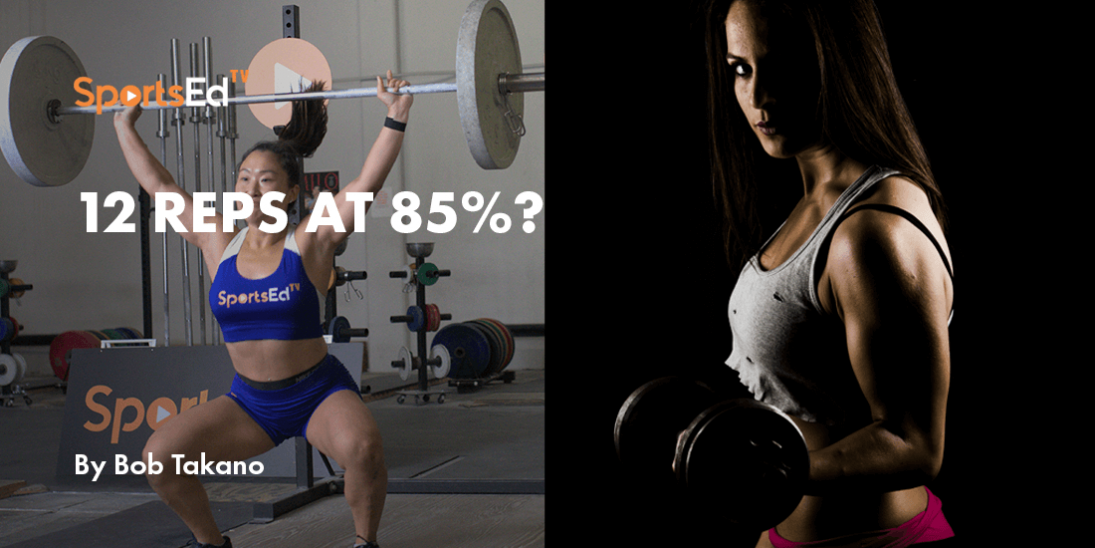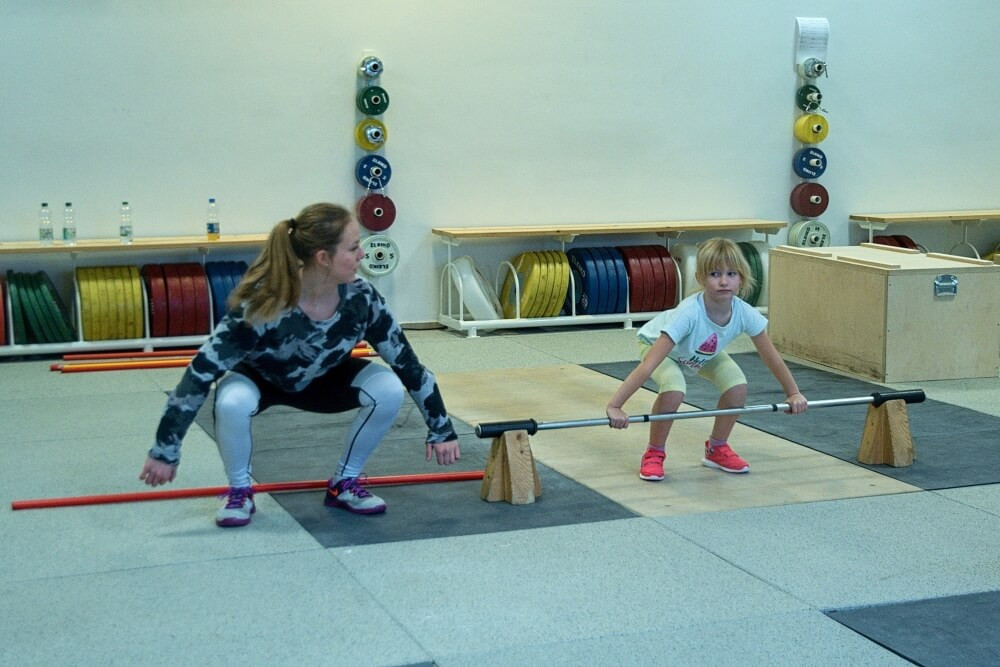Weightlifting
Welcome and thanks for visiting...

Learn to Clean Keep It Simple!
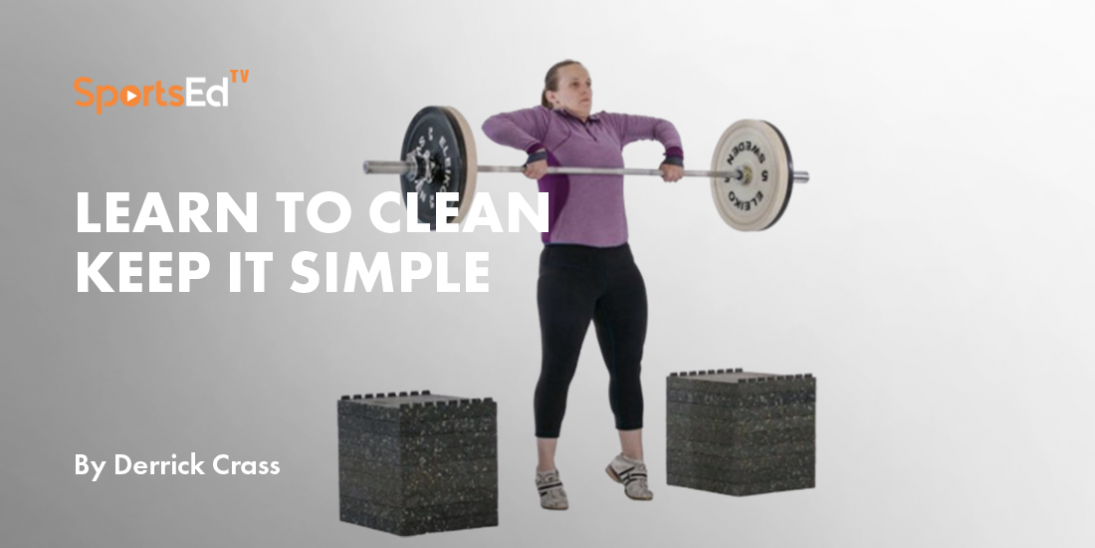
Derrick is originally from Belleville, IL. He had a 23-year career as a competitive weightlifter, winning several national championships, competing in numerous World Championships, and two Olympic Games (1984 &; 1988).
In 2010, Derrick invented a product called DC Blocks. DC Blocks is a product made in the U.S.A. from recycled plastics, and used by many professional sports teams, universities, fitness and medical facilities to develop their athletes’ power. The products are stackable, lightweight, and durable and are used in all phases of training, rehabilitation, and performance development.
In 2011, Derrick pursued a career as a Physician Assistant and graduated with a Master’s Degree in Medical Sciences, Physician Assistant studies in 2013 from St. Louis University. Currently, he lives in St. Louis, MO with his wife, Anne.
Contact him via email at: derrick@dctrainingconcept.com or through his website: www.dcblocksusa.com
OK, I’m not talking here about cleaning up the kitchen or getting your room in order. I want to cover the most effective means of learning the lift that weightlifters call the clean. Why this name, you may ask.
Well, since the earliest days of weightlifting competition, in the clean and jerk lift, the bar could not make contact along the body; it needed to be lifted in one “clean” motion from the floor to the shoulders. In 1964, the technical rules were modified to allow contact of the bar against the shins since this served no useful purpose. By 1968, the rules had been further changed to allow for the contact of the bar along the thighs. This allowed for a huge difference in technique, leading to what we see today. But the lift’s name remained the same.
Check out this SportsEdTV clip to become familiar with clean terminology. Pay particular attention to Step #4 (second pull), Step #5 (pull-under), Step #6 (the rack), and Step #7 (recovery):
Learn to Clean in Weightlifting and CrossFit
There are three forms of the clean allowed in competition: 1) squat style, 2) split style, and 3) power style. We seldom see a split clean in competition today. The power clean means simply that the lifter does not squat or split into a low receiving position (it does not mean more power is involved).
Performed properly, the clean is a very explosive, highly coordinated lift that rapidly passes through several key points. It takes less than one second for an experienced weightlifter to get a heavy barbell from the platform to the shoulders.
A beginning weightlifter or an athlete from another sport learning to clean cannot expect to be as efficient as an experienced lifter, but efficiency comes with proper practice.
The best way to learn a complex movement is to break it down into parts. My weightlifting teaching philosophy is a "top-down, whole-part-whole" approach that is consistent with what I learned from Carl Miller and Harvey Newton. This has proven successful in coaching my athlete population.
After a few first-workout experiential efforts at cleans from the floor (whole), I recommend new lifters initially practice exclusively from the high blocks (part) with light weights, perfect form, and increasing speed. On an individual basis, if or when the athlete shows a nice level of skill acquisition, I let them attempt the lifts from the floor, applying the new skills to the clean from the floor. They have fun as they make the lift easier than before they lifted from the high blocks. After a great deal of diligent practice, the entire lift (whole) is executed properly.
The following high-block progressions take place over several weeks:
- second pull (high blocks)
- power clean (high blocks)
- power clean + front squat (high blocks)
- squat clean (high blocks)
Set Up
The following learning sequence presumes the lifter is using pulling blocks. I believe strongly that mastering the clean (and the snatch) is best accomplished with the use of appropriate pulling blocks, as illustrated. However, if blocks are not available, a lifter can assume a similar posture and learn to lift from various “hang” (weights are not on the floor) positions.
We start in the "power position,” a posture from which the body provides maximum force against the barbell. The movement is similar to a jumping position where there is a simultaneous effort of the leg and torso muscles to propel (push) the barbell upwards.
At the start position for the high block clean, or clean from the power position, the bar contacts the legs at approximately mid-thigh with knees and ankles flexed. The center of the shoulder joint is slightly (approximately 3% of the athlete's height) in front of the bar. The center of pressure on the foot is at or slightly behind the metatarsal-phalangeal joints. The shoulder blades are retracted, with the shoulders internally rotated so the elbows point out to the sides and the wrists are slightly flexed.
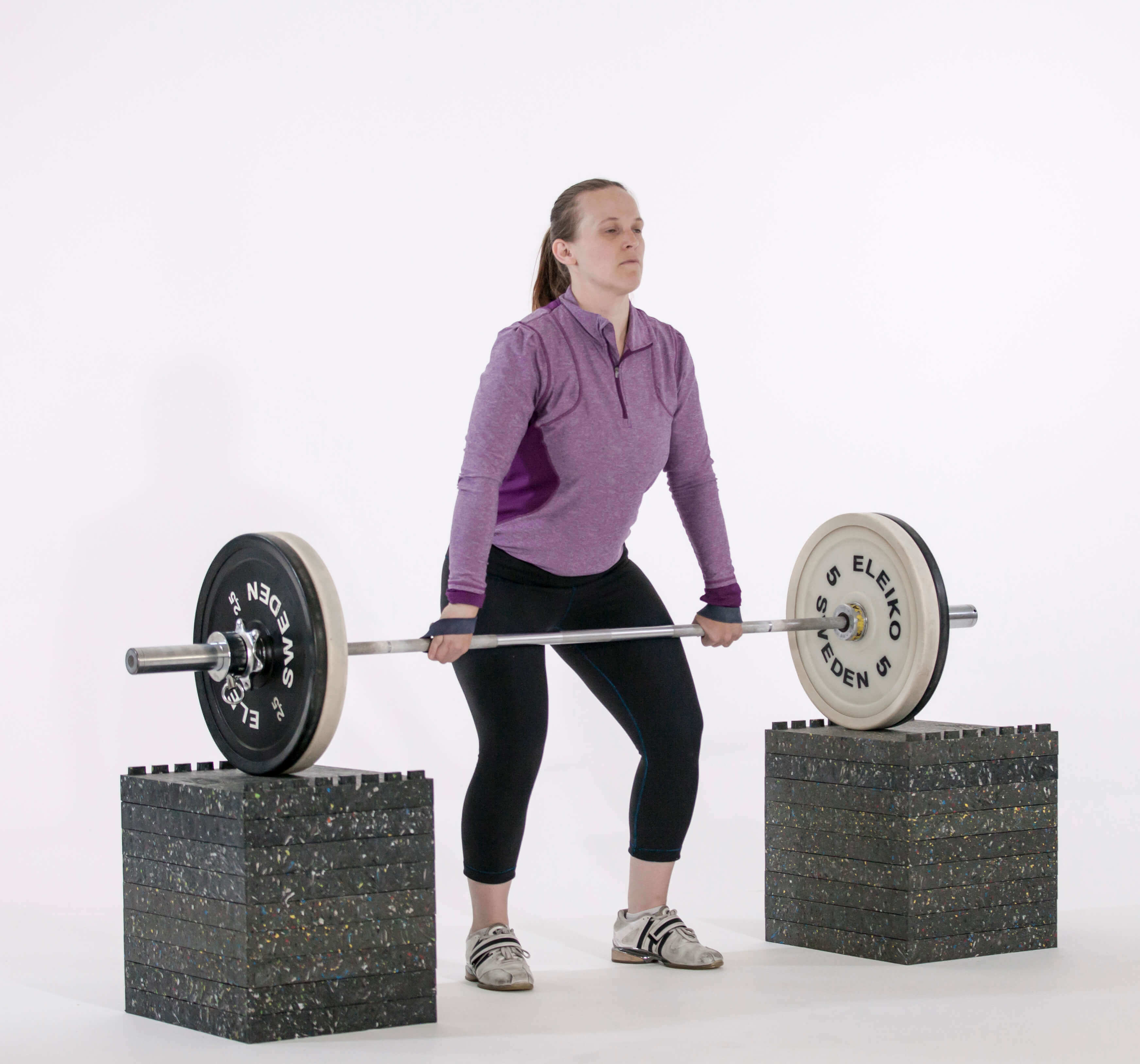
Coaching Cue
If an athlete has difficulty finding a good start position I instruct the following: 1) set the bar on blocks at approximately the right position, 2) the lifter executes three vertical jumps in rapid succession. On the third jump, the athlete holds the landing position, as if ready to jump again. Then, I have them extend their arms downwards as in a clean position and waddle forward to the bar. Compare the location of the hands/knuckles with what I have set up. Make any necessary adjustments. Over time, this position can be modified to attain exactly the same alignment as when the athlete lifts from the floor.
Clean Pull - High Blocks
This is the explosive second pull portion of the clean. Practicing only this short movement teaches the proper balanced position and explosiveness.
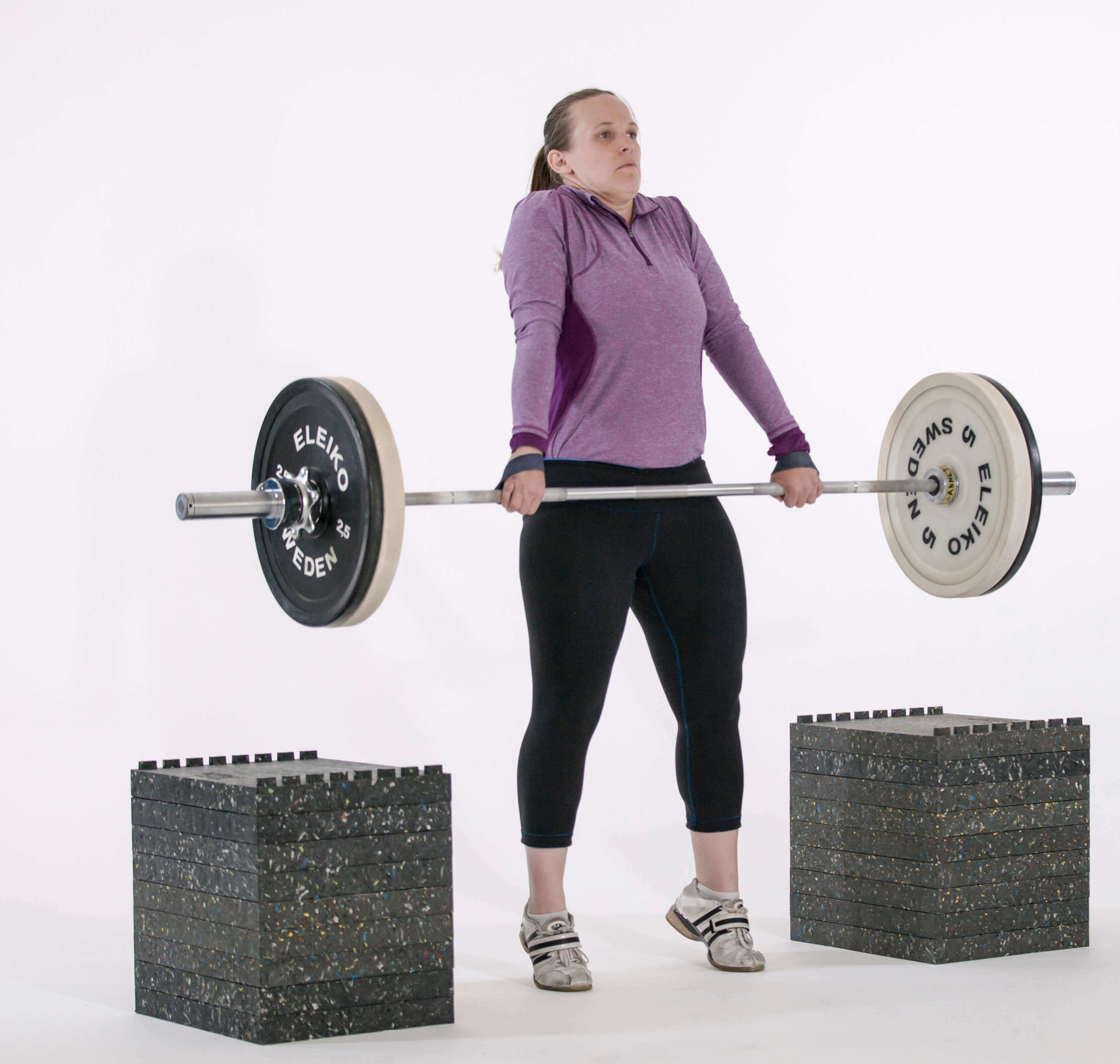
This movement is a simple but violent “explosion” upward. Focus on keeping the elbows straight. Forcefully extend the ankles, knees, and hips (a.k.a., “triple extension”), then contract the trapezius muscles of the upper back. The bar is close to the torso, with flexed wrists taking up any additional bar movement.
Check these SportsEdTV video clips to see how this action is performed:
Coaching Cue
For a balance check, the athlete should be able to hold this position without falling forward or backward. In my opinion, it is desirable for the lifter to hold this balanced position momentarily, then subsequently slowly “creep” or lean backward, requiring a small step rearward to regain balance.
After practicing this for several workouts let’s move to the power clean from high blocks by including the pull-under, rack, and recovery phases.
Power Clean - High Blocks
After several workouts, the second pull portion of the clean is consistent. Now, instead of remaining in the triple extended posture, let the bar continue upward while actively pulling under the barbell with flexed elbows. Keep the elbows above the bar as long as possible. While pulling under the barbell, the feet should reposition slightly out to the sides. Flip the elbows forward and rack the bar in a half-squat position. The barbell rests on the clavicles and deltoids with the elbows forward of the bar. Stand to recover, return the weights to the blocks, and repeat. Although not a rule, to be considered a power clean, maximum knee flexion (bend) is approximately 90°.

Check these SportsEdTV video clips to see our ultimate goal (the squat clean) in this second lesson:
Over time, the power clean eventually evolves into a squat clean from the high blocks. First, confirm that a comfortable front squat position is achievable. The barbell does not need to be pulled as high as in the power clean, but the lifter should rack the bar high and then descend into the full front squat position. Don’t quickly crash into the deep squat receiving position.
Coaching Cue
The high block position is an important position from which to teach and learn. Almost any athlete can learn the explosive second pull from high blocks, which is quite easy and produces maximum power. Over time, most athletes can learn the more difficult skills.
In my opinion, a young or new athlete in a sport that requires power should learn the full clean. However, as the athlete advances in their sport to a high level, the risk: reward relationship should be evaluated and the full clean may become much less important in their training regimen.
It’s not necessary to practice the full clean when strength training for other sports. However, this is a good skill to learn. Consider a lifter performing power cleans with a weight that results in racking the bar in a deep squat. In such a case knowing how to do a full squat clean not only saves the lift, but also the lifter’s back, shoulders, and wrists. Coaches: if you have a $1,000,000 athlete, YOU cannot afford to injure them in the weightroom!
Further Thoughts: Exercise Selection
Any number of possible combination exercises is available once a new lifter repeatedly demonstrates mastery of the clean from the high blocks. Creative coaches, feel free to invent additional purposeful combinations as well. Here are some examples:
- High block shrugs (keeping the elbows straight)
- High block shrugs & high pulls* in the same set
- High block shrugs &; high pulls* &; lifts in the same set
- High block high pulls* & lifts in the same set
- Sets of high block shrugs or high pulls* after sets of lifts
- High block technique work followed by lifts from the floor
*Although controversial in the U.S., clean high pulls, pulling the barbell to the navel, or 1/2-way between the navel and xiphoid process, with proper technique, is a valuable tool to teach proper movement of the upper extremities relative to the bar when pulling under the bar.
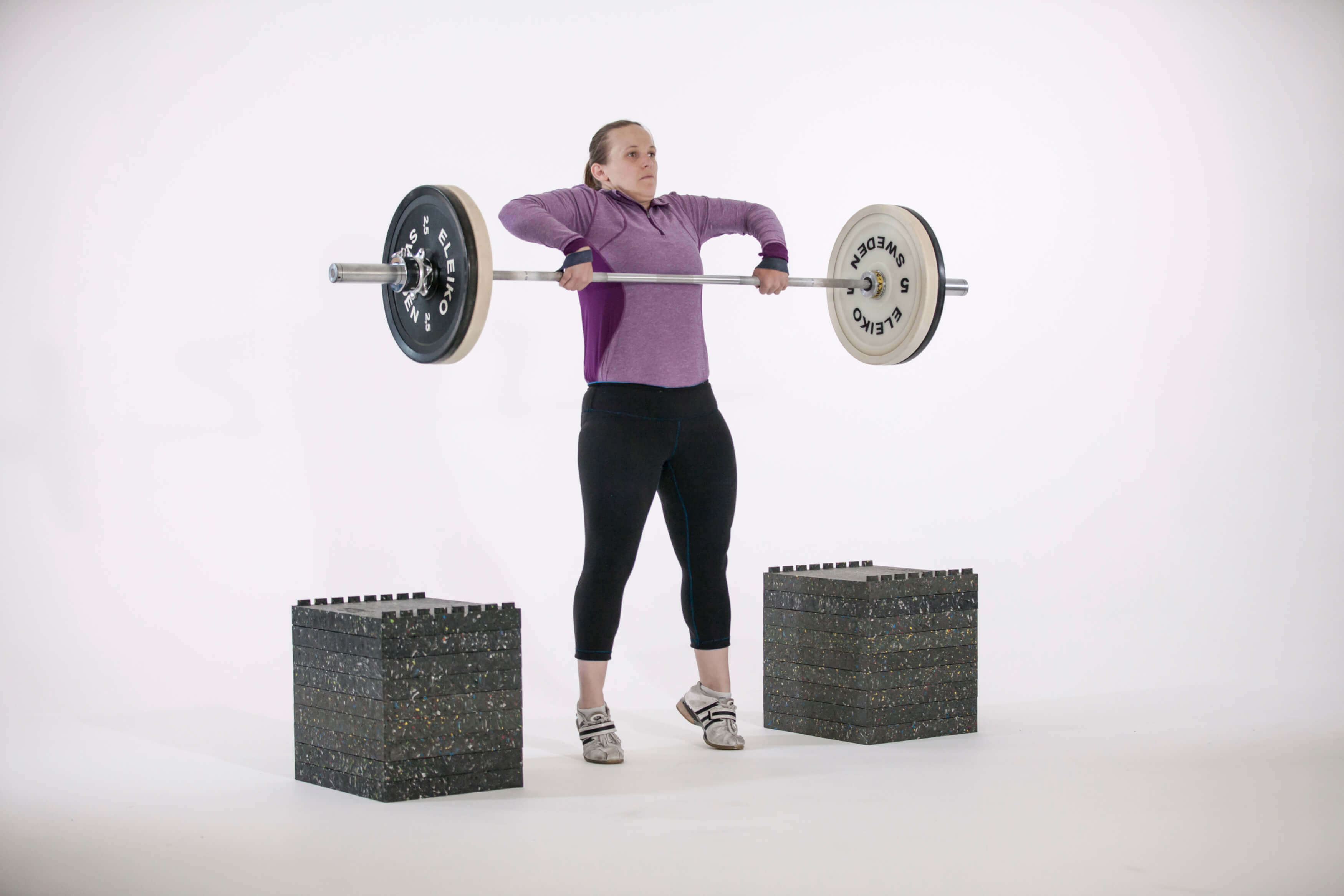
Repetition Scheme and Intensity
Lifting from the blocks should emulate identical lifting positions as when passing through these same stages from the floor. Compared to one’s best from the floor, a lifter should be able to manage about 90% from the high blocks, ±5%. Pulls and shrugs should be performed with significantly more resistance to take advantage of the overload principle. Here is a guideline I have used with success:
- High block cleans: to 70%, 3 repetitions, emphasis on technique
- High block cleans: 71-85%, 2 repetitions, emphasis on technique &; power
- High block cleans: 80-100% emphasis on technique, power, &; performance
- High block clean shrugs / pulls: 85-95%, 5-10 repetitions
- High block clean shrugs / pulls: 95-100%, 3-5 repetitions
- High block clean shrugs / pulls 96-150%, 1-3 repetitions
Summary
From an exercise standpoint, I believe scapular stabilization is a key for improved performance and health. This links the torso and the barbell through the upper extremities. Increased scapular stability is paramount to increasing barbell awareness and for the long-term health of the rotator cuff. I also feel that many athletes have no idea how to recruit their lower traps to facilitate scapular stability, eventually leading to injury. That’s why I choose to start with this exercise.
Training from the blocks is an efficient and effective training tool to safely develop technical proficiency and power. As the athlete becomes technically proficient, they can learn to safely lift heavier weights with increased speed, later progressing to lift from the knees, and then the floor. These are more technically demanding positions (for both the athlete AND you, the coach).




